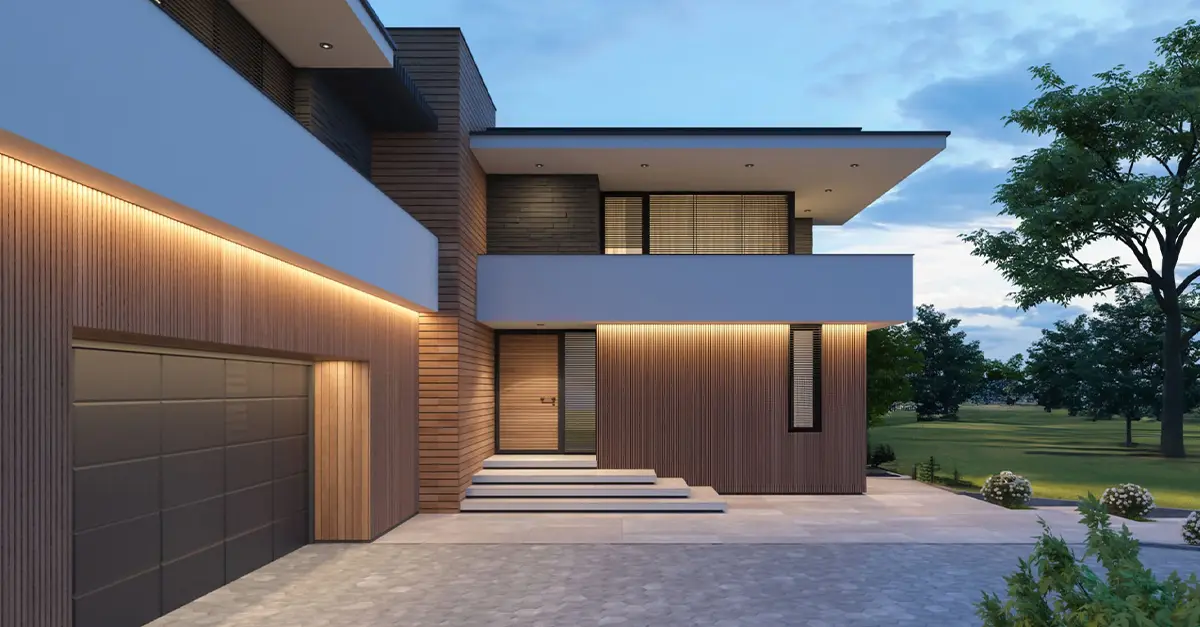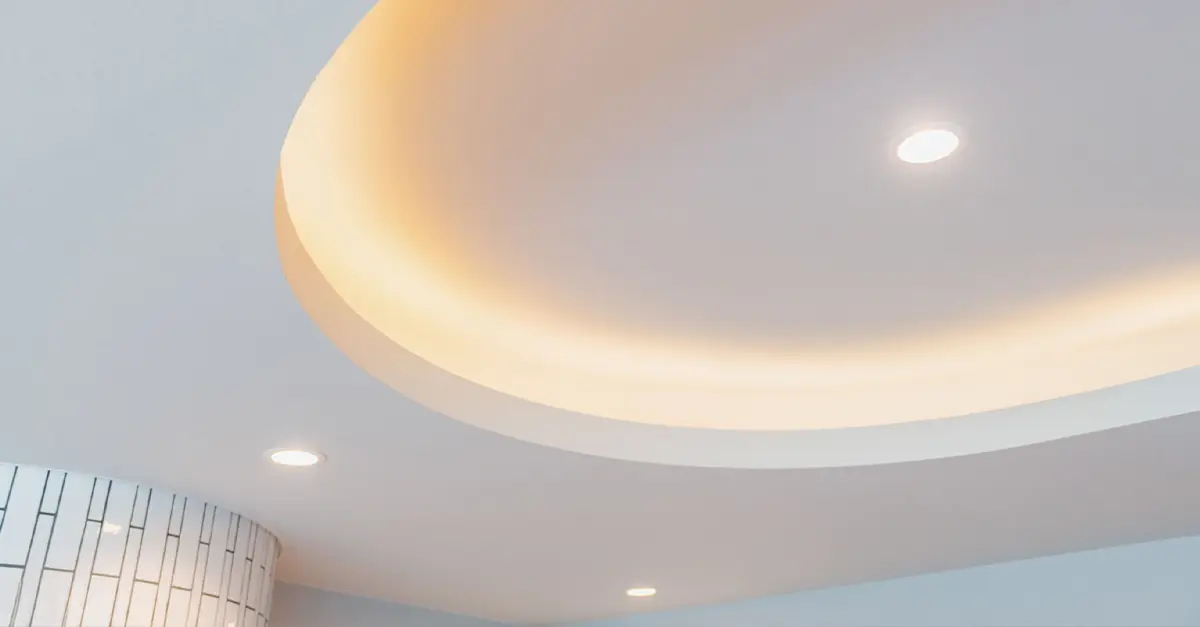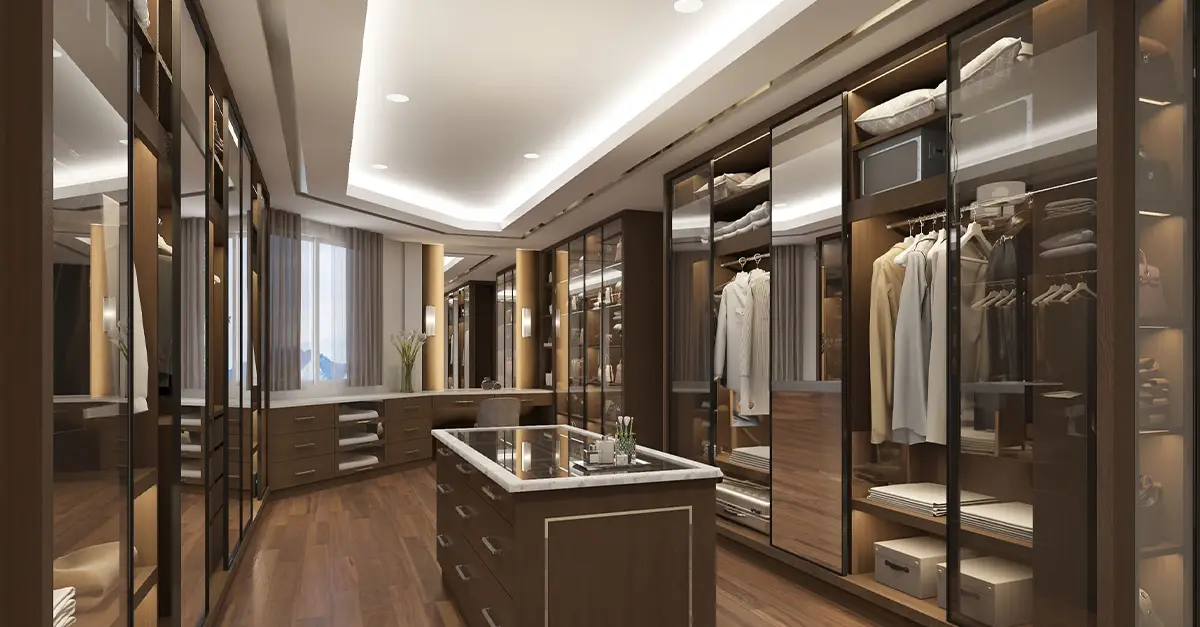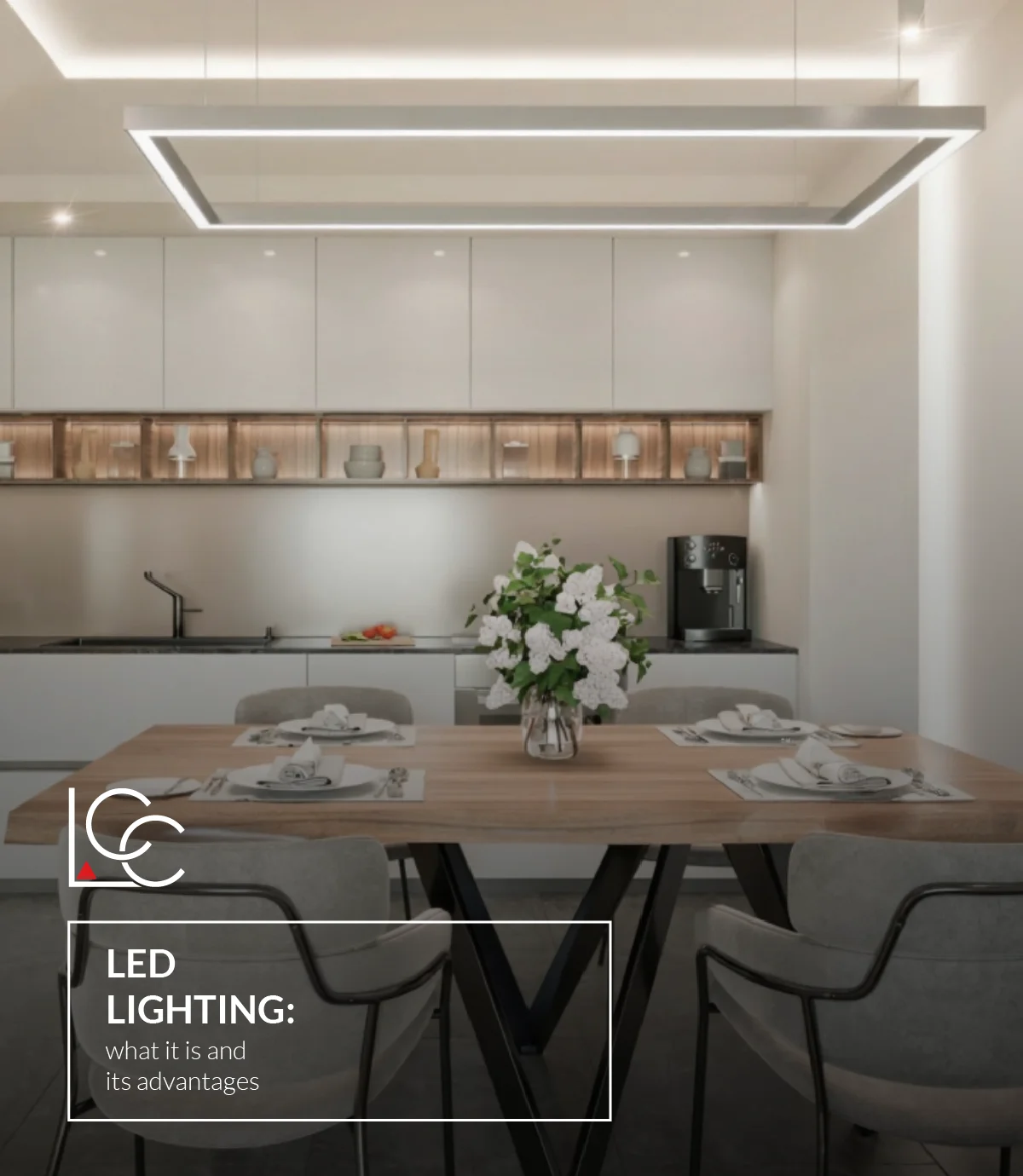LED lighting has revolutionized the way domestic, work, and public spaces are illuminated. Thanks to semiconductor technology, LEDs are able to convert electrical energy into light, offering remarkable energy efficiency, especially when compared to traditional lighting systems.
Because of their many benefits and adaptability to different types of environments, LEDs have rapidly spread across a wide range of applications.
In this article, we'll explain how LED lighting works, outlining its advantages and possible applications for your spaces.

LED Lighting: What It Is and How It Works
Choosing the right lighting for a given environment is essential - both aesthetically and functionally. Lighting can enhance the visual impact of a space by highlighting decorative and architectural elements, but it must also be practical and safe, with the right color and brightness levels.
There are countless options available today, allowing designers to select the ideal solution for each project. Nowadays, the focus is often on lighting systems that offer high energy performance and among these, LED lighting stands out.
LED lamps provide a long lifespan before any noticeable decline in light quality or intensity and come in a wide variety of colors, making them ideal for both indoor and outdoor spaces.
Given their numerous benefits, such as high energy efficiency and long durability, LEDs have largely replaced incandescent and fluorescent bulbs.
But how exactly does a LED produce light?
A LED - short for Light Emitting Diode - is a semiconductor diode that emits light when an electric current passes through it. Inside, it contains two layers: one positive (p-type) and one negative (n-type), joined together by a junction. When voltage is applied, electrons move from the negative to the positive layer. As they do, they release energy in the form of photons, the particles that make up light.
This process, called electroluminescence, is highly efficient, as nearly all the electricity is converted into light with minimal energy loss. The color of the light depends on the semiconductor material used in the diode.
Since its invention, LED technology has evolved significantly. Today, the market offers a wide range of options from warm and cool light LEDs to filament-style and curved filament bulbs. The latest designs combine high efficiency with the aesthetic appeal of traditional lamps, making LEDs suitable for virtually any environment.

The Advantages of LED Lighting
LED lighting offers several key benefits:
- Energy Efficiency: LEDs convert about 90% of electrical energy into light, consuming far less power than traditional bulbs and significantly reducing energy costs.
- Long Lifespan: LED bulbs last between 20,000 and 50,000 hours, far longer than conventional lighting.
- Reduced Maintenance Costs: their durability means less frequent replacements and lower maintenance expenses.
- Environmental Sustainability: LEDs are free of toxic substances and fully recyclable, reducing pollution and environmental impact.
- Safety and Durability: they emit very little heat and are resistant to shocks and vibrations, making them ideal for industrial or high-traffic settings.
- Instant Lighting: LEDs reach full brightness instantly and can handle frequent on/off cycles without damage.
Applications of LED Lighting
LLED lighting is incredibly versatile and can be used in a wide range of environments:
LEDs are perfect for domestic environments, perfectly adapting to ceiling lights, spotlights, decorative strips, and accent lighting. The possibility of choosing between different colors and temperatures and integrating smart systems allows you to create welcoming and functional atmospheres, optimizing consumption and maximizing comfort.
Inside shops and offices, LEDs provide uniform and continuous light, improving visibility and concentration. In sales environments, LEDs can be used to highlight products with spotlights or targeted panels. In this case, by customizing the lighting, it is possible to create a personalized illumination that highlights your products.
LED lighting is also perfect for industrial contexts. The powerful and long-lasting light is ideal for warehouses and factories. Additionally, in parking lots and logistics areas, it is possible to improve safety. Resistance to shocks, dust, and high temperatures allows for savings on maintenance costs.
For public spaces and infrastructure, such as streets, squares, and sports facilities, LEDs ensure uniform visibility and increased safety. Thanks to smart solutions like adaptive lighting systems, it is possible to adjust intensity based on factors such as traffic, weather, or the presence of people, resulting in further energy savings.
LEDs can also be used in agriculture, as they stimulate plant growth and flowering, and also in environments where particular brightness is required, such as medical studios and theaters.

LED Lighting: Integration Between Light and Architecture
Lighting has become a true architectural element capable of blending with structures, enhancing volumes and materials, and creating perfectly balanced atmospheres. When integrated from the early design stages, LED lighting becomes a defining feature of a space rather than an afterthought.
Developing a lighting design plan early allows for optimal placement and type selection, maximizing both function and aesthetics.
It becomes essential to find a synergy between form and function. For example, recessed LED strips along ceilings and walls emphasize geometries, create visual guide lines, and alter the perception of space. Spotlights, on the other hand, can be used to illuminate specific areas and highlight architectural elements, objects, or artworks.
With smart control systems, you can adjust brightness and color temperature dynamically - based on natural light, occupancy, or even circadian rhythms - ensuring seamless integration between light, architecture, and ambiance.
In minimalist spaces, the slim, linear profiles of LED fixtures offer elegance and purity, creating light that feels like a natural extension of the architecture itself.
LED Lighting: Conclusion
LED lighting represents an efficient, modern, and sustainable solution for illuminating both residential and commercial spaces. Its advantages in terms of energy savings, durability, and light quality make it the ideal choice for those who want lighting that enhances both aesthetics and functionality.
Careful lighting design is essential to achieving the best results. If you're ready to design your LED lighting system, rely on LuceControCorrente - together, we'll create a lighting project perfectly tailored to your needs.
